 When President James A. Garfield was shot on July 2nd, 1881, a mere three months and 28 days after his inauguration, the nation was shocked. Lincoln’s assassination was deemed a sort of war casualty, a freak occurrence brought on by Civil War, not the opening of a floodgate, so presidents had no security detail and moved about in public places like anyone else. It was easy, therefore, for a disgruntled office-seeker/nutjob with a delusional amount of self-regard like Charles J. Guiteau to approach Garfield at the Baltimore and Potomac Railroad station in Washington, D.C., and shoot him twice. One bullet penetrated his lower back; the other grazed his right arm.
When President James A. Garfield was shot on July 2nd, 1881, a mere three months and 28 days after his inauguration, the nation was shocked. Lincoln’s assassination was deemed a sort of war casualty, a freak occurrence brought on by Civil War, not the opening of a floodgate, so presidents had no security detail and moved about in public places like anyone else. It was easy, therefore, for a disgruntled office-seeker/nutjob with a delusional amount of self-regard like Charles J. Guiteau to approach Garfield at the Baltimore and Potomac Railroad station in Washington, D.C., and shoot him twice. One bullet penetrated his lower back; the other grazed his right arm.
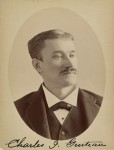 Even from a few feet away and taking his victim by surprise with a shot to the back, Guiteau was too incompetent to kill immediately. Garfield lived for 79 days, two months and 17 days of agony, before dying of blood poisoning on September 19th, 1881. Sadly, as you might have deduced from his cause of death, Garfield’s doctors were in part, maybe even in large part, responsible for the president’s painful death, a point that Guiteau made at his trial when he took responsibility for shooting Garfield but not for killing him. That outcome he laid at the doctors’ door, with a little help from God, of course, who was behind the whole thing, according to Guiteau.
Even from a few feet away and taking his victim by surprise with a shot to the back, Guiteau was too incompetent to kill immediately. Garfield lived for 79 days, two months and 17 days of agony, before dying of blood poisoning on September 19th, 1881. Sadly, as you might have deduced from his cause of death, Garfield’s doctors were in part, maybe even in large part, responsible for the president’s painful death, a point that Guiteau made at his trial when he took responsibility for shooting Garfield but not for killing him. That outcome he laid at the doctors’ door, with a little help from God, of course, who was behind the whole thing, according to Guiteau.
Although Joseph Lister had first published his successful tests of disinfection with carbolic acid in 1867 and had traveled across the United States in 1876 lecturing on his method, even though by 1879 Lister’s antiseptic protocols were almost universally adopted in Europe and Great Britain, the majority of American surgeons in 1881 rejected Listerism. They took pride in that “good old surgical stink” caused by years of accumulated blood and pus and god knows whatall assorted fluids on their surgical gowns. Garfield’s doctors were no exception.
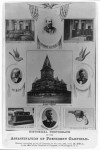 The first doctor to arrive at the scene was the District of Columbia’s health officer Dr. Smith Townsend. He gave Garfield brandy and smelling salts to keep him conscious, and then stuck his doubtless germ-laden fingers into the entrance wound, fishing around hoping to find the bullet. Nine more doctors followed, each poking and prodding the suffering man. As a crowd gathered, Townsend ordered the President be moved to a room on the second floor. Garfield’s cabinet members, who had come to the station to see him off, kept vigil by his side. One of those cabinet members, Secretary of War Robert Todd Lincoln, was particularly traumatized by seeing so painful a history repeat itself. He sent for Dr. Willard Bliss, one of the surgeons who had tried (and failed) to save his father’s life.
The first doctor to arrive at the scene was the District of Columbia’s health officer Dr. Smith Townsend. He gave Garfield brandy and smelling salts to keep him conscious, and then stuck his doubtless germ-laden fingers into the entrance wound, fishing around hoping to find the bullet. Nine more doctors followed, each poking and prodding the suffering man. As a crowd gathered, Townsend ordered the President be moved to a room on the second floor. Garfield’s cabinet members, who had come to the station to see him off, kept vigil by his side. One of those cabinet members, Secretary of War Robert Todd Lincoln, was particularly traumatized by seeing so painful a history repeat itself. He sent for Dr. Willard Bliss, one of the surgeons who had tried (and failed) to save his father’s life.
Bliss arrived and immediately took over. He administered morphine and had a go at tracking the bullet, sticking his pinky finger and a number of metal probes into the wound. One of the probes was jammed in so deep that it got caught in Garfield’s broken rib and had to be jiggled this way and that to remove it. Only after this examination was done did Bliss order Garfield transported to the White House.
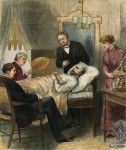 There even more doctors showed up, including Dr. Jedediah Baxter, Garfield’s personal physician. Baxter was turned away at the door by Bliss who insisted on taking complete control of the illustrious patient. Bliss dismissed all the doctors who had “helped” at the station and assembled his own team. Only two doctors were allowed to attend Garfield against Bliss’ wishes at the insistence of First Lady Lucretia Garfield: Dr. Susan Ann Edson, Mrs. Garfield’s personal physician and one of a very few women doctors in the country, and Garfield’s first cousin Dr. Silas Boynton. Bliss still managed to shut them out from making any decisions on treatment, relegating them to a nursing role.
There even more doctors showed up, including Dr. Jedediah Baxter, Garfield’s personal physician. Baxter was turned away at the door by Bliss who insisted on taking complete control of the illustrious patient. Bliss dismissed all the doctors who had “helped” at the station and assembled his own team. Only two doctors were allowed to attend Garfield against Bliss’ wishes at the insistence of First Lady Lucretia Garfield: Dr. Susan Ann Edson, Mrs. Garfield’s personal physician and one of a very few women doctors in the country, and Garfield’s first cousin Dr. Silas Boynton. Bliss still managed to shut them out from making any decisions on treatment, relegating them to a nursing role.
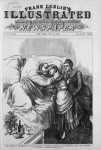 When Garfield survived the night and woke feeling refreshed, his breathing even, his temperature normal and his pulse rate a high but not alarming 114 beats per minute, it seemed his strong constitution might pull him through after all. His team of doctors did not leave well enough alone, however. They continued to obsess over the bullet, trying to find it so they could determine whether to remove it surgically or leave it in place. Without X-rays or other non-invasive technologies at their disposal and rejecting Lister’s precautions, unwashed fingers and probes were the method of choice.
When Garfield survived the night and woke feeling refreshed, his breathing even, his temperature normal and his pulse rate a high but not alarming 114 beats per minute, it seemed his strong constitution might pull him through after all. His team of doctors did not leave well enough alone, however. They continued to obsess over the bullet, trying to find it so they could determine whether to remove it surgically or leave it in place. Without X-rays or other non-invasive technologies at their disposal and rejecting Lister’s precautions, unwashed fingers and probes were the method of choice.
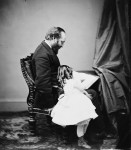 Enter Alexander Graham Bell. Bell was then at the crest of the wave of his fame. His telephone, patented in 1876, was a sensation that would make him a very rich man. Spurred by interference on the line caused by telegraph lines running near the a telephone conductor, in 1877 he patented an induction balance system that used two conductors with equal and opposite induced currents to create a “quiet circuit.” Induction balance machines weren’t new (a certain Professor Dove in Germany had invented one in 1841), and metals were known to interrupt the currents. What Bell thought of when he learned of the President’s predicament was how to connect his telephone technology with induction balance technology so that the interruption in the current could be heard as a ring through a handheld earpiece.
Enter Alexander Graham Bell. Bell was then at the crest of the wave of his fame. His telephone, patented in 1876, was a sensation that would make him a very rich man. Spurred by interference on the line caused by telegraph lines running near the a telephone conductor, in 1877 he patented an induction balance system that used two conductors with equal and opposite induced currents to create a “quiet circuit.” Induction balance machines weren’t new (a certain Professor Dove in Germany had invented one in 1841), and metals were known to interrupt the currents. What Bell thought of when he learned of the President’s predicament was how to connect his telephone technology with induction balance technology so that the interruption in the current could be heard as a ring through a handheld earpiece.
Using an induction balance device by Professor D.E. Hughes, with the help of his assistant Charles Sumner Tainter and the input of many eminent scientists (read his detailed report here), Bell created an amplified induction balance machine that would hopefully detect the bullet inside the President. Bliss wouldn’t let him near his patient until the machine was tested on another human guinea pig, so the doctor directed Bell to try it on Lieutenant Simpson who had been carrying a bullet inside of him since the Civil War. On July 22nd, Bell tested the machine on Simpson. He heard a signal but it was weak so he added a condenser which increased the hearing distance and made the sound more detectable.
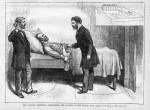 Bell arrived in Washington on July 26th and passed the induction balance machine over Garfield’s right side and only his right side. That was at Dr. Bliss’ insistence since he was sure the bullet was on the right and wanted to move the President as little as possible. The machine made a feeble sound over Garfield’s abdomen, the area Bliss and his crew thought the bullet was lodged in, but Bell was dubious that it was a legitimate signal. He went made more modifications to the machine, tested it on another Civil War veteran, a side of beef he’d stuck a bullet into and a thick bag of cotton he’d hidden a bullet in, and returned to the White House again on August 2nd. He got much the same results. The doctors took it as confirmation of their assessment. Bell thought it was interference from external metal elements, perhaps the springs under the mattress.
Bell arrived in Washington on July 26th and passed the induction balance machine over Garfield’s right side and only his right side. That was at Dr. Bliss’ insistence since he was sure the bullet was on the right and wanted to move the President as little as possible. The machine made a feeble sound over Garfield’s abdomen, the area Bliss and his crew thought the bullet was lodged in, but Bell was dubious that it was a legitimate signal. He went made more modifications to the machine, tested it on another Civil War veteran, a side of beef he’d stuck a bullet into and a thick bag of cotton he’d hidden a bullet in, and returned to the White House again on August 2nd. He got much the same results. The doctors took it as confirmation of their assessment. Bell thought it was interference from external metal elements, perhaps the springs under the mattress.
In the end, Bell’s induction balancephone was unable to accurately pinpoint the location of the bullet, and even if it had, by then it was too late. By July 23rd, sepsis had set in. No surgical intervention, filthy or clean, was going to save James Garfield. The pathogen-rich wound probing had already claimed his life. It was just a matter of time. Unable to keep down food, President Garfield lost 65 pounds in those 79 days, shrinking from a stout 200 pounds to a gaunt 135 pounds. His doctors gave him nutrient enemas to keep him from starving to death. Feverish and hallucinating, his poor, infection-riddled body developed painful abscesses which were lanced only to pop up in new places.
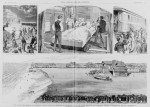 The metal detector wasn’t the only invention mothered by the necessity of keeping James Garfield alive and as comfortable as possible. The Navy Corps of Engineers created a rudimentary air conditioning system consisting of wool strips soaked in water and hung over blocks of ice. An electric fan was positioned to blow air through the strips and ice into the President’s room, keeping it at a steady 75 degrees during one of the hottest summers on record when it was 100 degrees outside and 90 indoors for weeks in a row. When Garfield was moved to his cottage in Long Branch, New Jersey, to spend his final days bathed in the dulcet breezes of the Jersey Shore, the Navy Corps of Engineers devised a waterbed to keep him from being jostled mercilessly over the train journey. It worked; Garfield reported the trip — which ended literally on his doorstep thanks to a mile-long spur built overnight by the Pennsylvania Railroad — had been quite pleasant.
The metal detector wasn’t the only invention mothered by the necessity of keeping James Garfield alive and as comfortable as possible. The Navy Corps of Engineers created a rudimentary air conditioning system consisting of wool strips soaked in water and hung over blocks of ice. An electric fan was positioned to blow air through the strips and ice into the President’s room, keeping it at a steady 75 degrees during one of the hottest summers on record when it was 100 degrees outside and 90 indoors for weeks in a row. When Garfield was moved to his cottage in Long Branch, New Jersey, to spend his final days bathed in the dulcet breezes of the Jersey Shore, the Navy Corps of Engineers devised a waterbed to keep him from being jostled mercilessly over the train journey. It worked; Garfield reported the trip — which ended literally on his doorstep thanks to a mile-long spur built overnight by the Pennsylvania Railroad — had been quite pleasant.
 James Garfield, born dirt poor in a log cabin in Ohio, who worked his way through college as a janitor, rose to the rank of General fighting in major battles of the Civil War, became state senator, then Representative, then Senator-elect, then President before he could take his seat in the Senate, died in Franklyn Cottage in full view of the ocean, his beloved Lucretia and children by his side. An autopsy found that Bliss was completely wrong about the location of the bullet. It had traveled through the first lumbar vertebra and stopped near the spleen, on the left side of Garfield’s body where Bliss insisted it was not.
James Garfield, born dirt poor in a log cabin in Ohio, who worked his way through college as a janitor, rose to the rank of General fighting in major battles of the Civil War, became state senator, then Representative, then Senator-elect, then President before he could take his seat in the Senate, died in Franklyn Cottage in full view of the ocean, his beloved Lucretia and children by his side. An autopsy found that Bliss was completely wrong about the location of the bullet. It had traveled through the first lumbar vertebra and stopped near the spleen, on the left side of Garfield’s body where Bliss insisted it was not.
As for presidential security, believe it or not it took another 20 years and yet another assassination in full public view, that of William McKinley on September 6th, 1901, for Congress to task the Secret Service with protecting the person of the President of the United States.
That’s enlightening. There’s a blogger I read who is absolutely insistent on the pre-eminence of US medicine in the 19th century. He is, naturally, American. But lo, American medicine, like everyone else’s, had its blind spots.
As for the necessity of hand-washing, I often see this attributed to Semmelweis, but apparently there were predecessors in Western medicine whose similar advice was similarly overlooked. No doubt there were also predecessors in pre-scientific medicine.
Listerism wasn’t widely adopted in the US until the turn of the century, which is a pretty gigantic mark against 19th century American medicine.
I’m sure you’re right that Lister was just one in a long line advocates of some form of medical cleanliness. I’m going to have to research that.
Wow, what a tragic story!
Truly. The fact that Garfield lived as long as he did means he probably could have recovered if they had just left his wound alone. He’d have been better off being tended by wolves.
Semmelweiss predates Lister by about 40
years.
By 20, I think, but Semmelweis advocated hand washing for the delivery of babies, which surgeons at that time wouldn’t have considered the same thing as what they did.
To my vast annoyance I’ve lost a reference, which I’d thought I’d bookmarked, to Semmelweis’s failure to alter medical practice, and citing two earlier people who had similarly failed, one even having published a book on the subject (18th century Briton, I think – perhaps the other was French? Memory fails.).
For an interesting and informative perspective on another possible cause of death, see this 2013 paper from the American Journal of Surgery: http://www.sciencedirect.com/science/article/pii/S0002961013002973